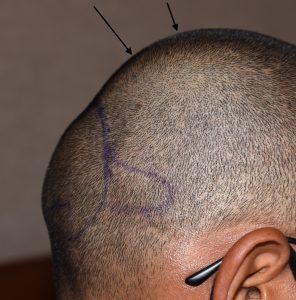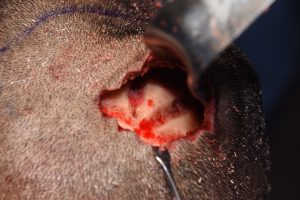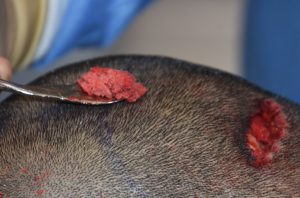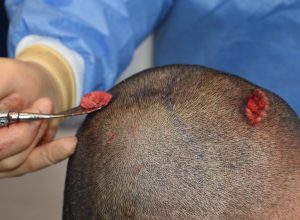Background: Aesthetic skull reductions are done by a high speed burring technique. The usual goal is to remove the outer cortical layer of skull bone down to just outside the diploic space. In so doing as a result of the high speed rotary burr a lot of bone residue or dust is generated. Because of the usual small scalp incisions used this bone dust needs to be cleared from the reduction site as it gets caught under the overlying scalp tissue. This allows on to create a substantial pile of bone dust which is then thrown away.
Bone dust is really hard cortical skull bone that has been reduced into very fine particles. With the irrigation that is used when doing the bone burring a putty-like bone mixture is created from the compiled dust residue. This bone dusty/putty would make a good bone graft material if there was an immediate use for it in the same patient in which it was created.



Case Highlights:
1) Occipital bun reduction produces a large amount of bone dust given the thickness of the bone and its large surface area.
2) A skull indentation where the original posterior fontanelle existed can occur due to incomplete bone fill which can occur above an occipital bun protrusion.
3) The bone dust generated from the occipital reduction can be used to fill in any skull indentations above it.
Dr. Barry Eppley
Indianapolis, Indiana






